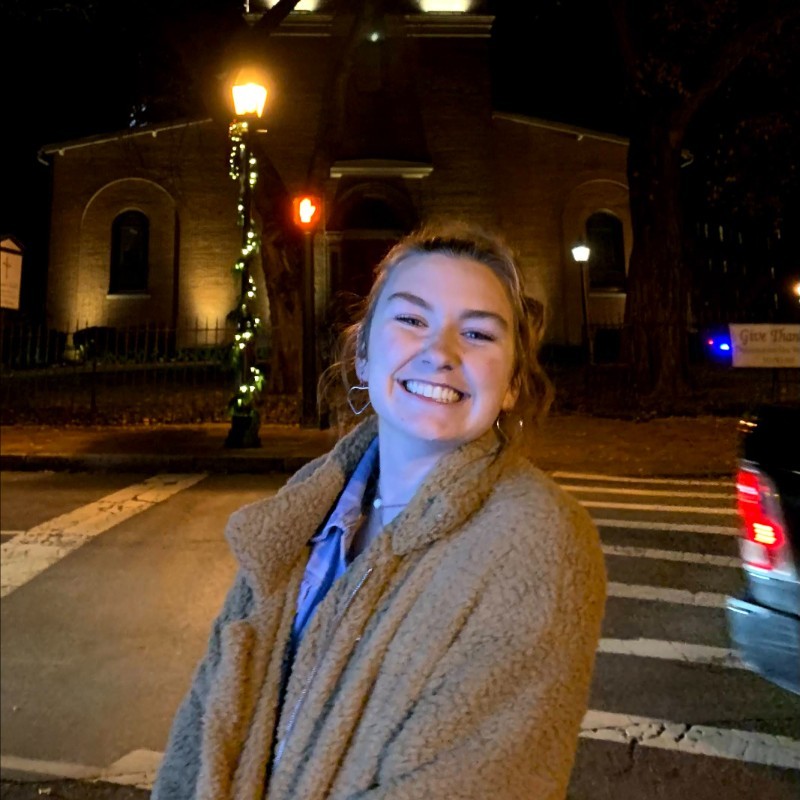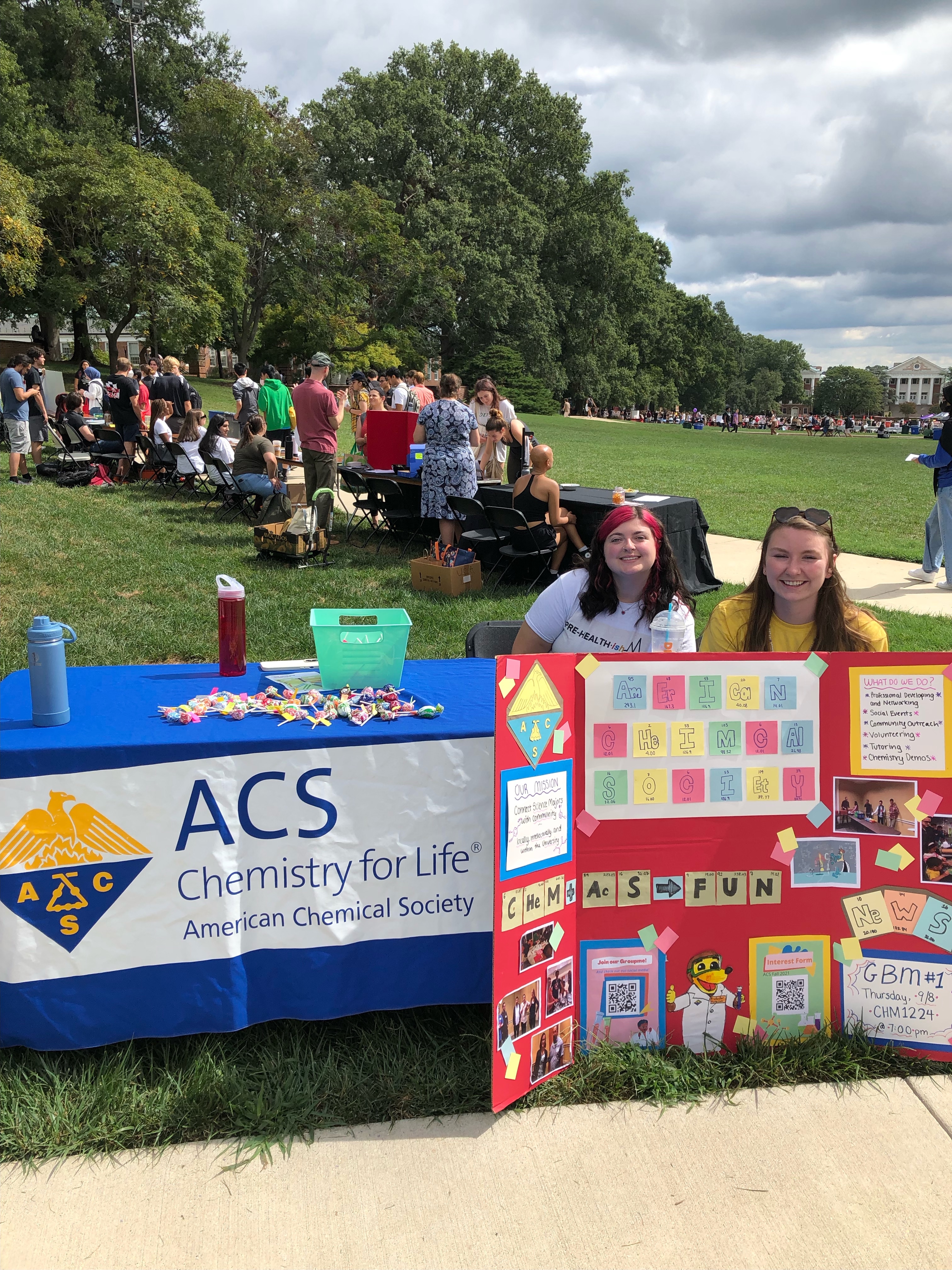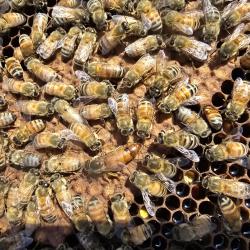From Slime to Space Instruments and Solar Panels
Junior Shannon Ganley is an aspiring astrochemist ready to take on the grand challenges of tomorrow
One of Shannon Ganley’s first memorable encounters with chemistry at the University of Maryland involved a clump of colorful slime.

“I was exploring the First Look Fair to find a club I could belong to, and after looking at a few booths, I saw something that caught my attention—slime,” recalled Ganley, a junior dual-degree student in chemistry and English. “I stopped by for a closer look and ended up listening to students explaining how the slime could change colors using chemistry. They were explaining what polymerization was and how thermochromic powders and different dyes worked to influence color.”
As a fan of the gooey slime-making trend, Ganley was instantly drawn to the demo. But learning about the chemistry behind the color-changing slime encouraged Ganley to join the organization behind the quirky demonstration: the UMD student chapter of the American Chemical Society (ACS).
“I was hooked, so I kept attending their meetings, even when they were on Zoom because of the pandemic,” Ganley explained. “We were provided chemistry demo kits to replicate experiments ourselves. I had a lot of fun trying to figure out how to do stuff like tie-dyeing masks with the pigments you’d get from boiling an avocado pit. It was hard to do all that in a dorm room, but I got to laugh and connect with all the other members on the call that way.”

Finding community
Through the ACS student chapter, Ganley participated in a variety of activities, including networking events, professional development opportunities and community service programs. Along with UMD Assistant Professor of Chemistry and Biochemistry Mercedes Taylor, Ganley and her fellow club members also conducted STEM outreach efforts with students from the College Park Academy. And thanks to talks given by both industry professionals and UMD chemistry and biochemistry faculty members like Lawrence Sita, Ganley believes she gained a valuable knowledge-sharing network and crucial insight into her potential career path.
Ganley has played an active role with ACS at UMD since her slimy first encounter with the group. In spring 2020, she joined the executive board and became the group’s communications director. By fall 2022, she was elected president of the organization—an achievement that she hopes will allow her to give back to the community that has supported her since her freshman year.
“Cool chemistry demos and learning about unexpected chemistry applications were why I initially joined,” Ganley explained. “But having that sense of community, collaborativeness and involvement is another big reason why I’m so passionate about ACS at UMD. As its president and as someone who’s grown from these experiences, I want to continue expanding what we offer to all current and new students.”
Exploring new spaces
ACS at UMD isn’t the only thing that helped Ganley grow as a chemist. She also found invaluable support and encouragement in the astrochemistry-focused Dodson Lab, where she helps design instruments to be used in labs to mimic space-like conditions and study chemical reactions as they occur in space.
Ganley’s interest in astrochemistry sparked when Assistant Professor of Chemistry and Biochemistry Leah Dodson gave a talk at one of Ganley’s introductory chemistry classes. Despite her immediate fascination with astrochemistry, Ganley was initially intimidated by the subject and hesitated when she first applied to be an undergraduate researcher in the lab.
“I’ve always liked physical and inorganic chemistry, but it somehow never occurred to me that chemistry could happen in space or that the chemical reactions we have down on Earth would happen so differently up there,” Ganley said. “Having mentors like Professor Dodson and graduate student Thomas Howard guide me through what I originally thought was overwhelming was tremendously helpful. They gave me feedback and support while allowing me to develop new skills to tackle problems on my own.”
Now a year into her position at the lab, Ganley has gained her footing and flourished. Under the guidance of her mentors and lab mates, she now has a fuller understanding of computer-aided design, coding and the methods required to simulate the chemistry that occurs in space within a laboratory environment. And with growing confidence in her new skills, Ganley hopes to pursue further studies in astrochemistry when she graduates in 2024.
“Shannon is both very naturally gifted and a hard worker in the lab, so it’s no surprise to me that she is already functioning at the level of a self-motivated independent graduate student,” Dodson said. “She will be a great addition to any lab.”
In addition to her research with the Dodson Lab, Ganley is working on a research thesis as part of the Gemstone Program in the Honors College. Her group, Team Solar, is investigating sustainable processes to recycle or reuse solar panels. Ganley and eight other students are exploring potential chemical treatments capable of sifting out toxins from photovoltaic cells.
“It’s now very important to me as a problem-solver that we find ways to overcome major challenges in fields such as energy and sustainability,” Ganley said. “My experiences here have definitely shaped my ideas about what I want to achieve in science and how I can get there—with collaboration and communication.”







